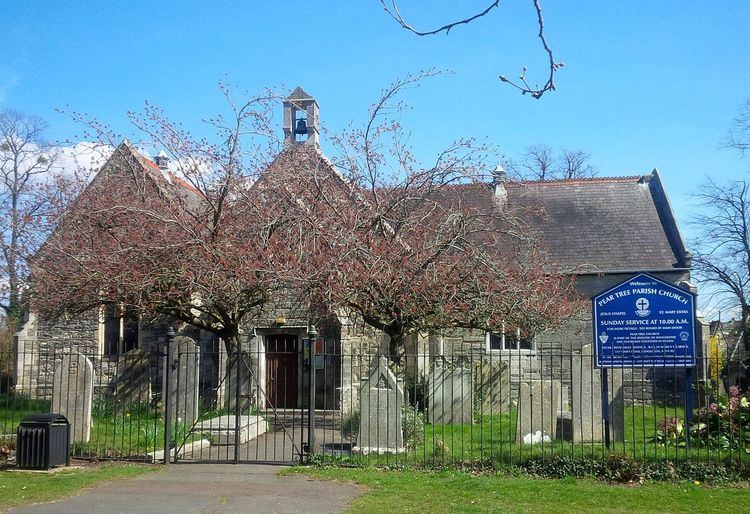 | ||
A litter pick with the friends of peartree green
Peartree Green is an open space on high ground on the east bank of the River Itchen in Southampton. A 16/17th century building, Peartree House, still stands, though is today concealed by private housing. The house and the green take their name from a pear tree that grew near the parish church. Some of the original open space has been built on, but a large proportion remains as a recreational area. It contains a church and the remains of a boarding school. It overlooks the River Itchen to St Mary's Church in Southampton.
Contents
Peartree green
Geography
Peartree Green adjoins the districts of Woolston, Bitterne, Sholing and Merryoak within the city of Southampton. It overlooks the River Itchen to St Mary's Church in Southampton.
History
Francis Mylles, M.P. for Winchester from 1588 to 1593, built Peartree House in the late 16th century, using stone from Bitterne Manor which had previously been used by the Romans at their settlement at Clausentum. Captain Richard Smith, former governor of Calshot Castle lived at Peartree House from approximately 1617.
A small church, now named Peartree Parish Church, was built as Jesus Chapel by Captain Richard Smith in 1618. It was dedicated in 1620. Although it was not part of Southampton at that time, Jesus Chapel served the parish of St Marys Extra which was used as an overflow for the parish of St Marys in Southampton. Construction of Jesus Chapel saved parishioners from a rough crossing over the Itchen to Southampton or a long journey to the neighbouring churches at Hound, Botley or South Stoneham. It is the world's oldest Anglican church, being the first one to be built after the English Reformation.
Peartree House was built by 1617, then altered in the late eighteenth century. It was once home to General Shrapnel inventor of the Shrapnel shell.
A boarding school was built next to Jesus Chapel in 1857.
By the late 19th Century, the area contained many impressive houses and villas which were home to Southampton's wealthy traders.
Itchen Ferry Village no longer exists, but it used to adjoin Peartree Green. The graveyard at Jesus Chapel contains a memorial to Richard Parker of Itchen Ferry Village, who died at sea following the wreck of the yacht Mignonette off South Africa in 1884. Cast adrift without provisions, his companions killed and ate him in order to survive. It is one of the few recorded cases of cannibalism in modern times. The subsequent murder trial Regina v. Dudley & Stephens changed English law by establishing the precedent that necessity is no defence to the charge of murder.
Peartree Green was incorporated into the borough of Southampton in 1920. The area has subsequently experienced significant suburban development. The boarding school became an annex to Woolston School; it has since been converted into residential homes.
